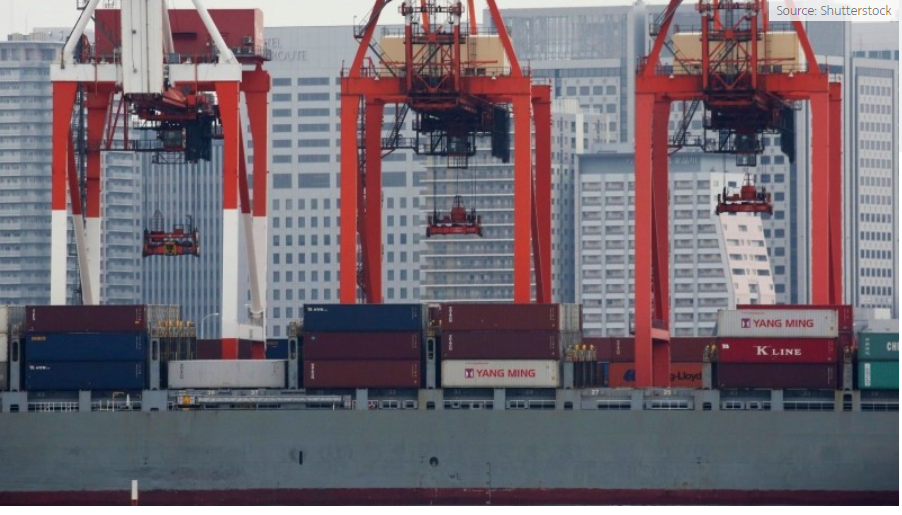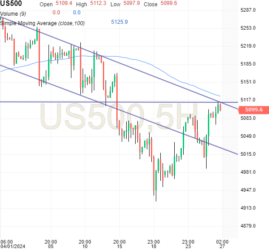ABN Amro har analyseret verdenshandelen siden coronakrisens start og konkluderer, at der er opstået en række flaskehalse, især som følge af den kraftige vækst i den kinesiske eksport. Det har været svært at få tilstrækkeligt med containere og skibe til og ud af de kinesiske havne. Det har ført til længere leveringstider og markant højere fragtrater – op til en firedobling af raterne. Men flaskehalsene forsvinder i løbet af i år, mener ABN Amro.
Global Trade: Bottlenecks may cap rebound
- Rebound in global trade seen in 2nd half of 2020 to extend into 2021 and 2022
- Still, China’s export outperformance and supply issues create bottlenecks …
- … contributing to longer delivery times and a surge in freight rates …
- … that may cap the cyclical uptick in global trade in the first half of 2021
1. Rebound global trade in 2H20 to extend into 2021 and 2022
Since early 2020, developments in global trade and industrial production have been strongly shaped by the covid-19 pandemic. After collapsing by 16% in January-May 2020 during the first round of lockdowns, CPB’s global trade indicator has shown a sharp rebound (+20% in June- December).
Annualized, following the covid-19 collapse, global trade growth turned positive again since November 2020 (December: +1.3% yoy). Thus, the rebound in global trade has extended into Q4-20 despite virus flare-ups and renewed lockdowns in large parts of the world, including Europe.
This is in line with our view that the impact of this second round would primarily be felt in services and would be less harmful to global manufacturing and trade compared to the havoc to global supply chains created by the first round of lockdowns. Consistent with our global macro view, we expect the rebound in global trade to extend into 2021 and 2022, although with some hiccups at the start of this year (see below).
2. Still, China’s exports outperformance is creating bottlenecks
Chinese exports clearly outperformed global trade during the pandemic year 2020 (until November). Firstly, this reflects that – following the world’s first covid-19 lockdowns in early 2020 – Chinese firms were back to business quicker than their foreign competitors.
Secondly, it reflects pandemic-related demand for medical supplies, computer related products, and other goods that can be bought online (sectors in which China has a competitive edge).
Against this background, the recent slide in China’s (export) PMIs (and the related drop in the global PMI export subindex) is remarkable. Both China’s official PMI export subindex and its equivalent published by Caixin have fallen back to below the neutral 50 mark in recent months (February: 48.8 and 47.6, respectively).
There are several explanations for this slide, such as the rising drags on the global economy from virus flare-ups, and the spread of new mutations and hence more restrictions. There are also seasonal factors such as the usual shutdown of Chinese factories during the Lunar New Year break. In addition, there is evidence that the outperformance of Chinese exports over the past year has caused logistical bottlenecks (see below). This may also help explaining why CPB’s export volume index for China fell back by three points in December 2020.
3. … contributing to longer delivery times …
Over the past few months we have seen more signals of capacity constraints in global trade, illustrated by longer delivery times and a surge in freight rates.
To start with the first factor, over the past few months, eurozone and US manufacturing PMIs point to a clear lengthening of delivery times. While a lengthening of delivery times is not unusual during cyclical rebounds, the extent to which these subindices have fallen suggest that there is more at play than just a cyclical correction.
The drop in these indices for the US and the Eurozone is comparable to the ones seen during the first round of covid-19 lockdowns last year, and is larger than during the cyclical turnaround following the global financial crisis in 2007-08. Meanwhile, China’s manufacturing PMI surveys point to a much less dramatic lengthening in delivery times. This suggests that the capacity constraints are impacting trade flows from China/Asia to US/Europe more than trade flows from US/Europe to China/Asia.
4. … and a surge in container freight rates
Another indicator pointing to bottleneck issues in global trade is the surge in container freight rates in recent months. If we look closer at these rates, the shipping bottlenecks seem indeed to be concentrated in Chinese ports.
The bulk of international goods trade is transported via large container ships, with a couple of big Chinese ports having a dominant position. Container freight rates from Shanghai have quadrupled over the past few months and have risen more sharply than the average pace of container freight rates worldwide.
All of this looks to be related to the surge in China’s exports in the course of last year mentioned above, due to pandemic-related demand shifts. However, supply side issues play a role as well, such as the fact that the supply of large container ships is quite inelastic. It obviously takes time for such large vessels to be produced, and it also takes time for existing vessels to be moved back to China’s ports.
To conclude, longer delivery times and a surge in freight rates point to bottlenecks in global goods transport. We assume that these bottlenecks will be mainly a temporary phenomenon that will be resolved in the course of this year, as pandemic disturbances will fade and supply and demand find a new equilibrium. However, these issues may cap the cyclical uptick in global trade in the first half of this year.








